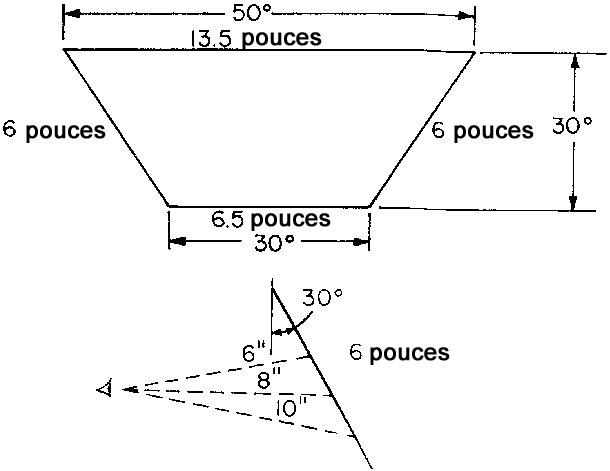
Les conditions dans lesquelles les astronautes font leurs observations sont sembables à celles qui seraient rencontrées par 1 ou 2 personnes à l'avant d'une petite voiture n'ayant pas de fenêtres sur les côtés ni à l'arrière et un pare-brise partiellement couvert, taché.
Les dimensions et configuration des fenêtres de l'appareil spatial, qui sont inclinées à 30 ° vers les astronautes, sont données en Figure 1. Les fenêtres sont petites et ne permettent qu'une vue du ciel en avant limitée (concernant les astronautes). La sphère de vue autour d'une capsule dans l'espace contient 41253 degrés carrés, mais les astronautes sont capables de voir seulement 1200 degrés carrésou environ 3 % de cette sphère ; et seulement 6 % d'un hémisphère. L'appareil spatial peut être tourné pour permettre aux astronautes de voir une zone différente que celle à laquelle ils font face, mais le carburant doit être conservé et les manœuvres ne sont habituellement pas effectuées pour fournir une vue meilleure ou différente. De fait, cependant, 94 % de l'angle solide de l'espace autour de la capsule a été, à tout moment donné, hors de vue des occupants de l'appareil spatial.
En plus du champ de vision restreint, les fenêtres elles-mêmes n'étaient jamais entièrement propres, et les difficultés imposées par the scattering of light from deposits on the window were severe. The deposits apparently occurred during the firing of third-stage rockets, when gases were swept past the windows. Attempts were made to eliminate the smudging by use of temporary covers jettisoned once orbit was achieved, but even then deposits were present on the inside of the outer pane of glass. Another source of contamination was apparently the material used to seal the glass to the frames. The net result was that the windows were never entirely clean, and scattered light hampered the astronautes' observations.
There were differences from one flight to another in viewing quality of the windows and from one window to the other on the same flight. Par exemple sur Gemini 7, the command pilot in the left seat was able to identify stars to magnitude 6 during satellite night, while the pilot in the right seat was limited to magnitude 4,4. The difference of 1,6 magnitudes (a factor of 4,4) was undoubtedly due to a difference in window transmission. It should be noted that stars as faint as magnitude 6 can be identified from the ground only under superb conditions (absence of artificial lights and moonlight plus a very clear sky).
The astronautes who had relatively clean windows often referred to the appearance of the night sky as seen in orbit, as similar to that seen by the pilot of a jet aircraft at 40000 pieds.
The smudged windows affected the visibility of objects during satellite night due to the decrease in the window transmission, but the effect was even more serious during satellite daytime when the glare from the light scattered by the smudge often was so bright as to destroy the contrast by which objects could be easily distinguished.